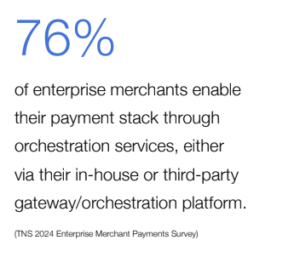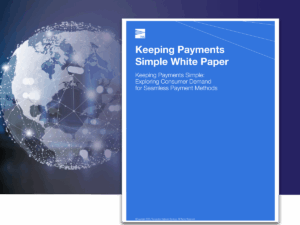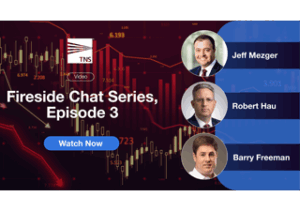There’s no such thing as a one-size-fits-all solution for payment orchestration. Selecting the right payment ecosystem will depend on the size of your business and your individual needs.
In this blog post, we delve into common considerations for different sized businesses as they select a payment orchestration platform – and chart their path towards growth.
Don’t Let Your Payment Orchestration Platform Hold Back Your Growth
As merchants grow, the complexities of managing their operations, infrastructure and payments does, too.
And as a merchant expands their operations across new channels, use cases, or geographies, dependency on fragmented payment technology solutions imposes capability limitations and implies high risk.
Scaling impacts your approach to payments, such as:
- Acquiring new businesses expands your scale (new physical/online stores) and increases internal commerce system complexity
- Creating new customer shopping experiences, like unattended (self-checkout) kiosks, QR-code payments and loyalty-linked digital wallets increases technological complexity
- Connecting online to in-person/in-store shopping experiences (eg click-and-collect model) requires an omnichannel payment experience
- Passporting online commerce channels to new markets and adding new alternative payment methods (APMs) means your business needs to interface with more acquirers and providers
- Increasing online presence and volume increases the need for mature value-added services such as fraud prevention tools
- New operating models such as 24/7 commerce availability makes reliable, secure network connectivity even more important
When it comes to payment orchestration solutions, there’s no such thing as one-size-fits-all. Let’s look at the different payment needs for each size business.
Finding the Payment Orchestration Platform for Your Size Business
Your payment needs will vary depending on the size of your business. And so your solution will need to vary accordingly.
Payment Orchestration Solutions for Small and Medium Businesses
In the start-up phase, businesses are looking for easy technical enablement.
Turnkey payment solutions from a single traditional acquirer or full-service PSP are practical payment solutions are ideal. They’re simple to implement and adequately support everything a smaller merchant needs.
Payment Orchestration Platforms for Lower Mid-Market Merchants
As a business begins to grow, their attention shifts to enabling both physical and digital growth, while also improving customer experience.
The ideal payment solution requires exploring beyond the single-payment provider set-up, but many businesses of this size are challenged by their limited resources.
Payment Orchestration Platforms for Mid-Market and Enterprise Merchants
Merchants with multiple sites have a number of key considerations, including future-proofing their investment in their payment infrastructure, enabling omnichannel transactions and maintaining flexibility to accommodate continued growth.
For these businesses, Third-party orchestration platforms, power flexibility and componentized services. These merchants may lack the investment and resources to in-source their payment solutions.
Payment Orchestration Platforms for Mega Merchants
The largest merchants are looking for the flexibility to build and customize their own product and payment stack, and they have the resources to do it, too. They’re looking to optimize cost at scale across their business lines.
Mega merchants are best served by using multiple specialized vendors, PSPs and acquirers to cover complex use cases, geographic footprint and to de-risk.
Payment Orchestration Uptake Across Industries
The larger the scale of operations, the greater the need for orchestration. Merchants who recognize the value proposition either opt to build an orchestration solution in-house or look to third-party orchestrators for their online and/or in-person needs.
Third-party orchestration is viable for most enterprise-grade merchants, as in-sourcing can be costly, time-consuming and only achievable with dedicated resources that understand payments.
No two payment stacks are the same, because no two businesses are the same.
But when it comes to what motivates enterprises to use an external third-party orchestration service, integration is paramount.

Enterprise merchants show a clear market demand for payment orchestration to drive better integrations with their network of vendors, expand their connections to enable new forms of payment methods (which in turn allow for more use cases), and optimize success (which can help drive revenue and reduce costs).
Want to Learn More About Payment Orchestration Platforms?
The landscape is quickly changing, and we’ve only just scratched the surface. For a more complete view, including industry-wide insights, vertical penetration and the landscape of payment orchestration providers, you’ll want to download our report, Navigating In-person and Online Payment Complexity.





